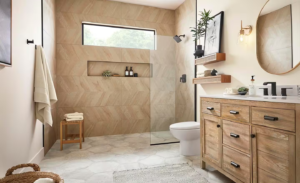After a car accident, your priority should be getting medical attention. This is essential to ensure that your injuries are diagnosed and treated promptly. It also helps to bolster your claim by documenting the severity of your injuries.
An attorney plays a critical role in obtaining and strategically presenting supporting evidence. They also facilitate all communication with insurance companies to prevent the undervaluation of your claim. Contact Bristol Accident Attorney now!

In an accident, seeking medical attention for your injuries is critical. After that, the next step is to identify all the evidence you will need to prove your claim. The best way to do this is with the help of an experienced attorney.
A top car accident lawyer will work with an investigative team to locate and analyze all relevant documents, interview eyewitnesses and experts, and visit the accident scene to make observations. In addition, they will work tirelessly to gather physical evidence like photographs, videos and damaged property. They will also make copies of all relevant documents, ensuring that they are legible and clearly marked as copies.
Additionally, an attorney will review your medical records to determine the full impact of your injuries. They will consider current and future medical treatment costs, how your injuries have limited your ability to earn a living, and the emotional impacts of your accident. They will then use this information to build a comprehensive demand package that includes all of your damages.
When determining if you should hire a top Manhattan car accident lawyer, consider their track record and reputation for success. Also, ask about their contingency fee basis to see if it aligns with your interests and will motivate them to work diligently on your case.
Leav & Steinberg LLP has an extensive knowledge of New York law and can provide the representation you need after a car accident. They are particularly adept at tackling cases where the fault for the accident is disputed. In these situations, the victim’s damages may be reduced under the state’s comparative fault principle.
Filing a Lawsuit
Car accident victims often receive conflicting advice about how to handle their legal case. It is important to have a Rochester car accident attorney on your side who can explain the law and stand up to insurance companies on your behalf. This can make a difference in whether or not you are able to secure the full compensation you deserve.
Before starting the legal process, an attorney will take the time to fully understand your accident and injuries. This includes interviewing you and obtaining medical records related to your treatment. An attorney will also consult with experts if necessary to build a strong case for your damages.
Once your Rochester car accident lawyer has a complete understanding of your accident and injuries, they can start the lawsuit process. They will file a Complaint with the Court and serve copies of the complaint to the defendants and their insurance providers. The defendants are those who were at fault in the accident. Their liability insurance providers will hire defense attorneys to fight the claim.
An experienced car accident lawyer will review your medical records and assess your damages. This includes current and future medical expenses, loss of income from being unable to work, property damage costs to repair or replace your vehicle, and non-economic damages for physical pain, emotional trauma, and disruption to daily life. They will compile a comprehensive claim, including all relevant damages and expenses, and submit it to the at-fault parties’ insurance companies.
If the at-fault party refuses to offer a fair settlement, your car accident lawyer can file a lawsuit against them. Your attorney will prepare documents and arguments to present to a jury and will keep you updated on any significant developments.
Some accidents involve more than one liable party, such as when a rideshare company, public transportation or sanitation vehicle is involved in an accident. These cases can be especially complex, as it is possible that the government may be held liable. An experienced Rochester car accident attorney can help you determine the appropriate parties to name in your lawsuit and make sure all relevant claims are addressed.
Negotiating with the Insurance Company
A good car accident lawyer can be invaluable during the negotiation process. They understand how to communicate effectively with insurance companies, and they will negotiate a fair settlement for you.
They can also help you determine how much your car is worth. This is important because the insurance company will try to pay you as little as possible, and you need to have an accurate understanding of your vehicle’s pre-accident value in order to get a fair offer. This includes factors such as mileage, condition, and any applicable deductibles.
In addition to negotiating the right amount of compensation, your attorney can also ensure that your claim is processed properly and on time. The longer you wait to file a claim, the less likely it is that you will receive the compensation you need for your medical bills, loss of income, and property damage.
Another thing to keep in mind is that insurance adjusters are looking for any way they can decrease your claim. They will use a variety of tactics, including questioning you in a way that makes you admit fault or propose a low settlement. They may also deny your claim altogether or delay the process. An experienced accident attorney will know how to handle these situations and will quickly move the process along.
An accident attorney can also represent you in a lawsuit against the at-fault party. In some cases, this is the only way to secure full compensation for your losses. This is particularly true if the responsible party is a large corporation or municipality, such as a public transportation company or sanitation service.
Many attorneys work on a contingency fee basis, meaning that they are only paid if they successfully secure compensation for their clients. This can be a great incentive for them to put in the extra work needed to get your claim settled. Moreover, their training and experience puts them in a superior position than you are when it comes to getting the money that you deserve. In fact, accident victims who hire lawyers typically end up receiving far more than those who do not.
Going to Trial
If the insurance company refuses to accept a fair settlement offer, the case may go to trial. In this process, a judge or jury hears evidence about the accident and decides whether or not the defendant is responsible for the victim’s damages. The court will also determine how much money the plaintiff should receive.
Before going to trial, the lawyer prepares a bill of particulars which lists out all of the injuries and damages suffered by their client. They may also have experts review the scene of the accident and recreate what occurred to strengthen their case. It is important to have a car accident lawyer that has experience bringing cases to trial as they can be more effective in arguing for maximum compensation.
During the pretrial process, lawyers can also conduct depositions of witnesses and obtain other relevant documents that support the claim. They can also request medical and police records to help establish a link between the accident and the injured person’s damages. They will also review the insurance policy for coverage limitations and interpret the language to leverage maximum recovery.
The attorneys at Leav & Steinberg LLP have years of experience with fighting for fair compensation for car accident victims in New York City. They understand how a serious injury can have long-lasting effects on a person’s life and their emotional well being. They consider the full cost of damages such as non-economic losses to ensure that victims receive their fair share of compensation.
It is not uncommon for the defendant’s insurance company to deny responsibility or even try to argue that their client is partially to blame for the accident. This is where having an experienced lawyer is crucial because they can navigate through complex issues like comparative negligence laws, which can impact the total amount of the recovery. They can also present compelling arguments about the victim’s suffering to persuade a jury to award them a fair amount of compensation. This includes demonstrating the physical, financial, and emotional costs of the injury to help them achieve a positive outcome.





